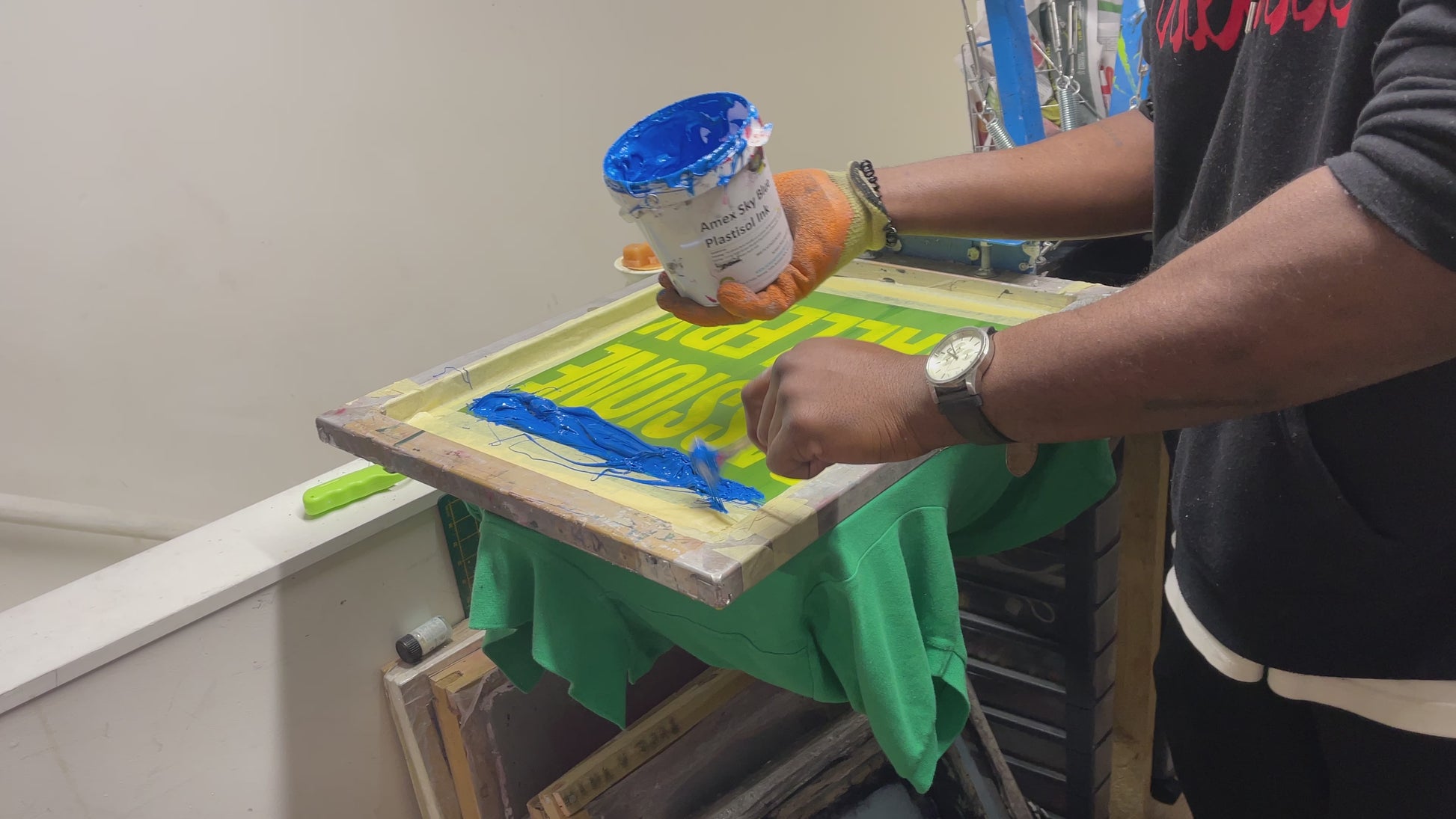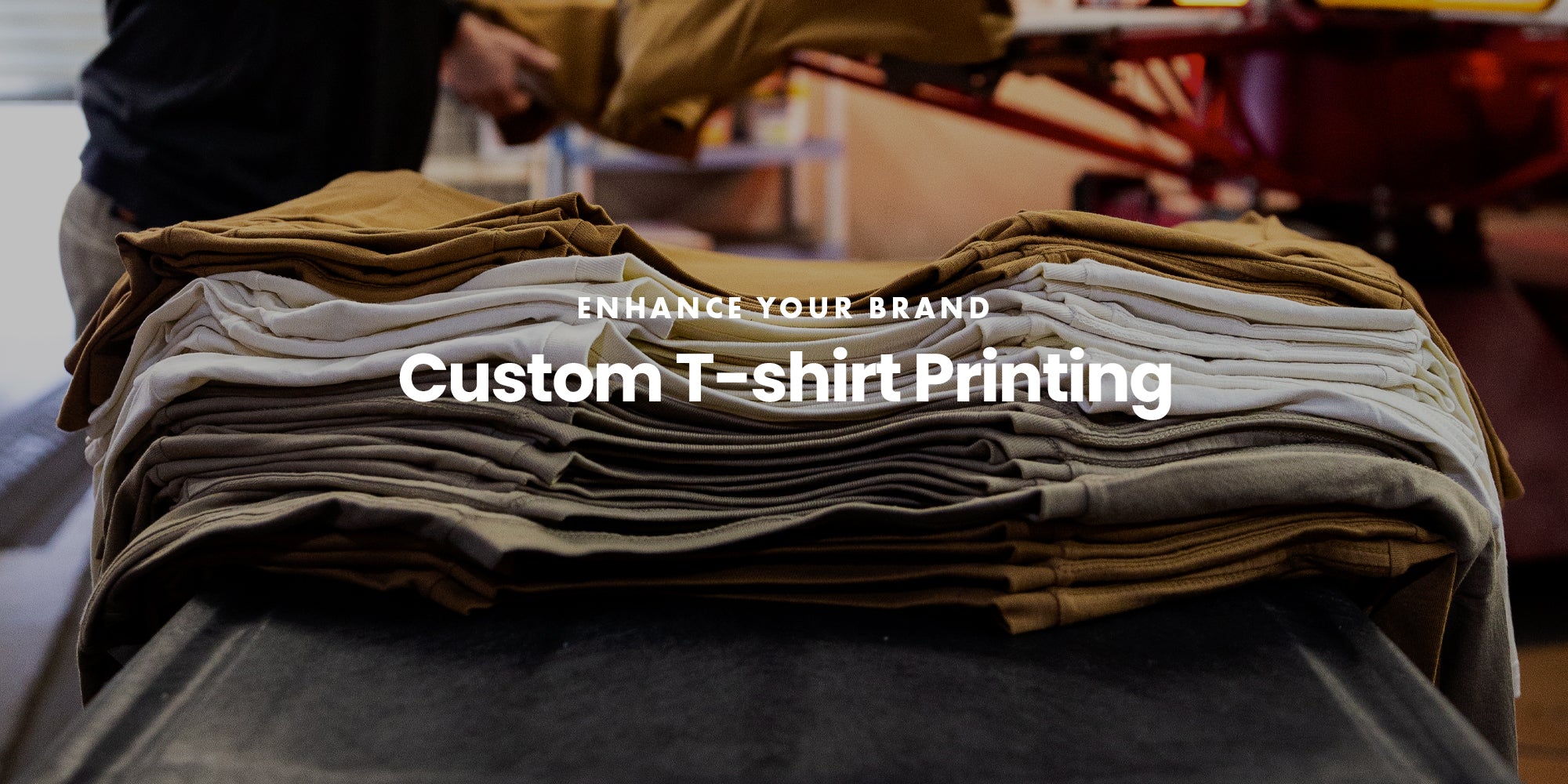Budget-Friendly T-Shirt Printing for Startups
Budget-Friendly T-Shirt Printing for Startups
Blog Article
Display Printing Uncovered: Every Little Thing You Need to Learn About T-Shirt and Garment Printing Methods
Screen printing is a remarkable approach that incorporates art with strategy, supplying countless opportunities for creative thinking. Prepared to check out the necessary aspects that make screen printing an art type?
The Fundamentals of Display Printing: Exactly How It Works
When you dive right into display printing, you'll find it's both an art and a scientific research. At its core, display printing includes developing a stencil, or screen, that enables ink to pass via only in certain locations.
Placement the screen over the fabric, then make use of a squeegee to press ink through the screen onto the garment. Each step is necessary, and understanding them will elevate your display printing abilities, transforming basic garments into special, expressive pieces.
Kinds Of Display Printing Strategies
Once you understand the essentials of screen printing, it's time to check out the numerous techniques that can boost your styles. One popular technique is conventional display printing, where ink is pushed with a stenciled display. This technique is fantastic for bold, vibrant colors. Then there's water-based ink printing, which uses a softer feeling and is environmentally friendly, but it calls for a different method to healing.
An additional choice is plastisol printing, known for its resilience and vivid shades, making it a favorite for several brands. Experiment with halftone printing to develop gradient effects and complex designs.
Essential Devices for Screen Printing
To accomplish stunning results in display printing, having the best tools is fundamental. Initially, you'll require a strong display printing frame, which holds the mesh that moves your layout onto the garment. Next off, purchase high-grade squeegees; these are vital for using ink evenly across the display. You'll additionally require a great direct exposure unit to produce your displays, as well as a washout booth for cleaning them after usage. A reputable warmth source, like a conveyor dryer or warmth press, is critical for treating your prints to guarantee durability. Do not forget an appropriate work space, equipped with tables and storage for your materials. Lastly, safety equipment, such as handwear covers and masks, will keep you secure from chemicals and inks. With the right devices, you'll be well on your means to producing professional-quality prints.
Choosing the Right Inks and Materials
When selecting inks and products for display printing, you require to consider the kind of ink that functions finest for your job. Think of fabric compatibility to assure your styles look last and excellent lengthy. Check out green ink alternatives to make your printing procedure much more sustainable.
Kinds Of Display Inks
Selecting the best display ink is crucial for attaining lively, resilient prints that fulfill your task's requirements. There are several sorts of screen inks to examine. Plastisol ink is preferred for its flexibility and ease of usage, supplying outstanding shade opacity on dark materials. Water-based ink, on the other hand, supplies a softer feeling and is environmentally friendly, making it optimal for those wanting to minimize their ecological effect. Discharge inks get rid of dye from the fabric, causing a soft, vintage appearance however require details handling. Specialty inks, such as glow-in-the-dark or metallic, can include unique effects to your styles. Evaluate your task demands and select the ink that aligns finest with your wanted outcome.

Material Compatibility Considerations
Understanding textile compatibility is important for achieving high-grade display prints, especially given that different materials respond uniquely to numerous inks. Constantly evaluate your inks on example material to guarantee they stick effectively and preserve color honesty. In addition, keep in mind that textile weight and appearance can impact the final end result, so choosing the right ink and material combo is vital for your project's success.
Eco-Friendly Ink Options
Green inks are becoming a popular choice for screen printers who want to reduce their environmental effect while preserving top quality. When choosing inks, take into consideration water-based inks, which are much less hazardous and simpler to clean up compared to conventional solvents.
Furthermore, search for inks made from sustainable resources, such as soy or vegetable-based choices. By selecting the best inks and materials, you'll not only create spectacular designs but also add to an extra lasting printing procedure. Make the button, and your prints will certainly mirror your dedication to the setting!
Preparing Your Design for Screen Printing

Submit Format Needs
To assure your design looks sharp and lively on material, you'll require to pay close focus to submit format demands for display printing. Make certain your style has a clear history to protect against undesirable white sides on your prints. Keep shade settings in mind; CMYK is basic for display printing, so convert your RGB creates as necessary.
Shade Splitting Up Strategies
Shade splitting up is an important action in preparing your style for screen printing, and grasping it can greatly boost your print top quality. You'll require to break your design into individual shades, as each shade needs a separate display throughout printing. Begin by identifying all the shades in your layout and produce layers for each one. You can use software like Adobe Photoshop or Illustrator to separate and separate colors effectively. Be particular to conserve each layer as a separate file, typically in a format like TIFF or PSD. This accuracy not just ensures accurate shade depiction however likewise improves the printing process. By paying focus to shade separation, you'll achieve professional and vibrant results in your screen-printed garments.
Resolution and Dimension
Achieving the very best cause screen printing begins with guaranteeing your design has the right resolution and dimension. Ideally, your art work must go to least 300 DPI (dots per inch) for sharp, clear prints. If you make use of reduced resolution, your last item might look pixelated and unprofessional.
When it involves size, take into consideration the measurements of your print location. Design your artwork to match the last print dimension, ideally producing it in the real dimensions you'll be publishing. In this manner, you'll avoid any kind of unexpected scaling problems.
Constantly check your style in both vector and raster styles. Vector graphics can be scaled without shedding quality, making them excellent for screen printing. Preparing correctly will ensure your style looks incredible on every garment!
Step-by-Step Screen Printing Refine
Display printing is a vibrant procedure that allows you to create lively layouts on numerous surface areas. To start, you'll need a display, solution, and your picked ink. Prepare your display by cleansing it extensively. Next, apply the emulsion uniformly and allow it dry in a dark area. When completely dry, reveal your screen to light with your style positioned on it, which will certainly harden the emulsion where the light hits, developing a stencil - screen printing kit.
After cleaning out the unexposed emulsion, your screen is ready. Establish it up on your printing surface area and align your garment underneath it. Pour ink onto the screen and use a squeegee to press the ink with the stencil onto the fabric. Lift the display carefully and allow the print completely dry. Ultimately, heal the ink making use of warm to ensure resilience. That's it! You've successfully screen published your design.
Tips for Successful Screen Printing Projects
While you're diving right into your screen visit our website printing projects, bear in mind that prep work is essential to success. Start by collecting all your materials-- inks, garments, screens, and squeegees. A tidy office assists prevent undesirable errors, so clean up before you begin.
Following, confirm your art work is high-resolution and appropriately sized for your garment. Test your screen for proper exposure and tidy it extensively to avoid smudges. When blending your inks, follow the supplier's guidelines to attain the right consistency.
During printing, use even pressure with your squeegee for regular outcomes. Don't hurry; take your time to verify each print meets your criteria. After printing, allow your garments completely dry totally before dealing with or packaging them.
Finally, always keep a sample of your benefit future recommendation. In this manner, you can examine your progress and improve your methods with time. Satisfied printing!

Often Asked Questions
How Lengthy Does It Take to Establish up a Screen Printing Task?
Establishing a display printing job commonly takes around half an hour to an hour. You'll prepare the displays, mix inks, and readjust the press. The time varies based on intricacy and experience, so remain organized!
Can I Publish on Various Fabric Types Making Use Of the Exact Same Method?
Yes, you can print on various textile types making use of the same method, yet you'll need to change your setups and inks. Some materials take in ink differently, so experimenting guarantees the most effective outcomes for each and every product.
What Are Typical Errors to Stay Clear Of in Display Printing?
When screen printing, more tips here stay clear of common blunders like making use of the wrong ink, neglecting proper direct exposure times, or missing pre-press checks. Constantly test your setup and preserve tidy displays to ensure top quality results each time.
Exactly How Can I Effectively Clean and Preserve My Screen Printing Equipment?
To properly clean and maintain your display printing equipment, you must on a regular basis wash screens with appropriate solvents, check mops for wear, and guarantee all devices are saved completely dry and dust-free. Uniformity boosts and avoids costly repair services performance.
Is Display Printing Environmentally Pleasant Compared to Other Approaches?
Display printing can be more ecologically pleasant than other techniques, specifically if you use water-based inks and eco-conscious materials. By picking lasting supplies and practices, you reduce waste and decrease your influence on the world.
Display Printing Uncovered: Everything You Need to Know Regarding Tee and Garment Printing Strategies
At its core, screen printing involves producing a pattern, or display, that permits ink to pass through only in details locations. Placement the display over the fabric, then use a squeegee to push ink with the display onto the garment. One preferred approach is traditional screen printing, where ink is pushed through a stenciled screen.When choosing inks and materials for screen printing, you need to take right into account the kind of ink that functions ideal for your task.
Report this page